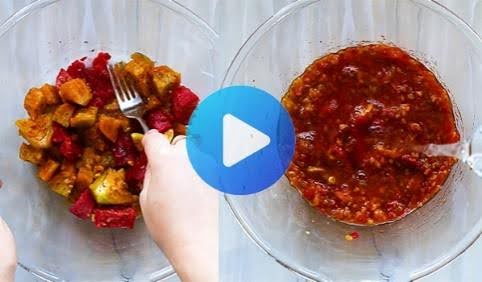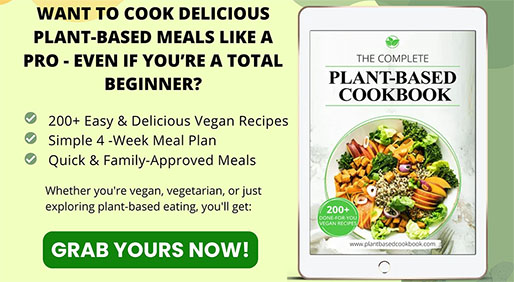Feeling tired often? Like you need a nap halfway through the day? I hear this a lot, especially from women juggling work, family, fitness, and everything else life throws our way. Many people think you need meat for energy, but I’ve found that a well-planned vegan diet can actually give you a huge, lasting energy boost. It’s about choosing the right plant foods that fill you up and keep you going strong, helping you power through workouts and manage your weight effectively.
Let’s dive into how eating vegan can supercharge your energy levels and explore some delicious meal ideas that won’t leave you feeling sluggish.
Why Plants Power You Up
Think about where energy comes from. Our bodies primarily use carbohydrates for fuel. But not all carbs are created equal. Simple carbs, like those in sugary drinks or white bread, give you a quick burst of energy followed by a crash. This leaves you feeling more tired than before.
Plant-based diets, when done right, are packed with complex carbohydrates. These are found in foods like whole grains (oats, brown rice, quinoa), beans, lentils, fruits, and vegetables. Your body digests complex carbs more slowly. This means you get a steady release of energy over a longer period. No more sharp spikes and drops. Just smooth, reliable fuel to keep you focused and active.
Insider Tip: Enjoying Healthy and Flavorful Plant-Based Dishes with The Complete Plant Based Recipe Cookbook
Fiber is another hero in the plant kingdom. Vegan diets are naturally high in fiber. Fiber helps slow down sugar absorption into your bloodstream, further contributing to stable energy levels. It also keeps you feeling full and satisfied, which is a big plus if you’re watching your weight. When you feel full, you’re less likely to reach for sugary snacks that mess with your energy.
Beyond carbs and fiber, plant foods are loaded with vitamins and minerals that play crucial roles in energy production. Things like B vitamins, iron, and magnesium are essential for turning the food you eat into usable energy for your cells. A varied vegan diet makes it easier to get plenty of these micronutrients.
Compare this to some heavy, meat-centric meals. While meat provides protein and certain nutrients like iron and B12, it can also be high in saturated fat and take a lot of energy for your body to digest. This can sometimes lead to that heavy, sleepy feeling after eating. Plant foods are generally lighter and easier to digest, freeing up more energy for you to use.
Vegan Superstars for Energy
To really maximize your energy on a vegan diet, focus on getting enough of these key nutrients. Planning is important here, especially for women who might have different nutritional needs.
Iron: The Oxygen Carrier
Iron is super important for energy because it helps carry oxygen in your blood to all your muscles and your brain. If you don’t get enough iron, you can feel tired, weak, and have trouble concentrating. This is known as iron deficiency anemia, and women are often at higher risk due to monthly cycles.
Many people worry about getting enough iron on a vegan diet, but there are plenty of great plant sources.
- Lentils: These little powerhouses are packed with iron and protein.
- Chickpeas and Beans: Kidney beans, black beans, and chickpeas are good sources.
- Tofu and Tempeh: Soy-based foods offer iron.
- Spinach and Kale: Dark leafy greens are winners. Cook them to get more iron.
- Pumpkin Seeds and Sesame Seeds: Great for snacking or adding to meals.
- Fortified Foods: Many breakfast cereals and plant milks have iron added. Check the labels.
Tip for Absorption: Plant-based iron (called non-heme iron) isn’t absorbed as easily as iron from meat (heme iron). But you can boost absorption by eating iron-rich foods with foods high in vitamin C. Think lentils with tomatoes, spinach salad with orange slices, or fortified cereal with berries. Avoid drinking coffee or tea with iron-rich meals, as they can hinder absorption.
Vitamin B12: The Energy Metabolism Key
Vitamin B12 is vital for turning food into energy and keeping your nerve cells healthy. A lack of B12 can cause serious fatigue and nerve problems. Here’s the thing: B12 is primarily found in animal products. It’s made by bacteria, not plants or animals themselves.
This means vegans must find reliable sources of B12. Relying on unwashed vegetables is not a safe bet.
- Fortified Foods: This is the easiest way for many vegans. Look for fortified plant milks (soy, almond, oat), breakfast cereals, nutritional yeast (often called “nooch,” it has a cheesy flavor), and some vegan meat alternatives. Check labels to see how much B12 they contain.
- Supplements: Taking a B12 supplement is a very reliable way to ensure you’re getting enough. Cyanocobalamin is the most common and well-studied form. Talk to your doctor or a registered dietitian about the right dosage for you.
Getting enough B12 is non-negotiable for long-term health and energy on a vegan diet.
Complex Carbohydrates: Your Main Fuel Source
As I mentioned, complex carbs are your best friends for sustained energy. They provide glucose, the main fuel for your brain and muscles during exercise.
- Oats: Perfect for breakfast. Slow-releasing energy to start your day.
- Quinoa: A complete protein and complex carb. Great in salads or as a side dish.
- Brown Rice: A healthier alternative to white rice.
- Sweet Potatoes: Packed with vitamins and provide steady energy.
- Whole-Wheat Bread and Pasta: Choose whole grain options over refined white versions.
- Beans and Lentils: Double duty – complex carbs and protein.
Don’t fear carbs. Just choose the right ones. These whole-food sources fuel your body efficiently without the crash.
Healthy Fats: For Lasting Power and Hormones
Fats are another important energy source, especially for longer, less intense activities. Healthy fats also help with absorbing certain vitamins and are crucial for hormone production, which is particularly important for women’s health.
- Avocados: Creamy, delicious, and full of monounsaturated fats.
- Nuts: Almonds, walnuts, cashews. Great for snacks. Walnuts are especially good for omega-3s.
- Seeds: Chia seeds, flaxseeds, hemp seeds, pumpkin seeds, sunflower seeds. Add them to smoothies, oatmeal, or salads. Chia and flax are excellent sources of plant-based omega-3 fatty acids (ALA).
- Olive Oil: Use extra virgin olive oil for dressings and low-heat cooking.
Including these healthy fats helps provide long-lasting energy and keeps you feeling satisfied.
Plant-Based Protein: Building Blocks and Satiety
Protein is essential for building and repairing tissues, including muscles after a workout. It also helps you feel full and can contribute to stable energy levels by slowing carb absorption. Getting enough protein on a vegan diet is totally achievable.
- Lentils and Beans: Protein powerhouses.
- Tofu, Tempeh, and Edamame: Versatile soy products. Choose organic or non-GMO if preferred.
- Seitan: Made from wheat gluten, very high in protein. Good meat substitute texture. (Avoid if gluten sensitive).
- Quinoa: One of the few plant foods containing all essential amino acids.
- Nuts and Seeds: Offer protein along with healthy fats.
- Nutritional Yeast: Provides protein and often B12.
- Vegan Protein Powders: Pea, soy, rice, or hemp protein powders can supplement intake, especially around workouts.
Aim to include a good protein source in each meal.
Magnesium: The Energy Spark Plug
Magnesium is involved in hundreds of processes in your body, including energy production. It helps convert food into energy. Low magnesium levels can contribute to fatigue.
- Leafy Green Vegetables: Spinach, Swiss chard.
- Nuts and Seeds: Pumpkin seeds, almonds, cashews.
- Legumes: Black beans, edamame.
- Whole Grains: Brown rice, oats.
- Avocado: Yes, again. It’s a nutritional star.
Eating a varied vegan diet rich in whole foods usually provides plenty of magnesium.
Eating Right Through the Day
When you eat is almost as important as what you eat for maintaining energy. Skipping meals or waiting too long between eating can cause your blood sugar to drop, leading to fatigue and cravings.
Start Strong with Breakfast
Don’t skip breakfast. It breaks your overnight fast and kick-starts your metabolism. Aim for a combination of complex carbs, protein, and healthy fats.
- Example: Oatmeal made with soy milk, topped with berries, chia seeds, and a sprinkle of walnuts. This provides slow-burning carbs, protein, fiber, and healthy fats.
Fuel Your Workouts
What you eat before and after exercise impacts your performance and recovery.
- Pre-Workout (1-2 hours before): Focus on easily digestible carbohydrates for quick energy. A banana, a small bowl of oats, or a couple of rice cakes with a thin layer of almond butter work well. Avoid high-fat or high-fiber foods right before, as they can cause digestive upset during exercise.
- Post-Workout (within 30-60 minutes): Replenish glycogen stores and repair muscle tissue with a mix of protein and carbohydrates. A smoothie with plant-based protein powder, banana, and spinach is a great option. Or try some tofu scramble with whole-wheat toast.
Balanced Lunches and Dinners
Keep your energy steady through the afternoon and evening with balanced meals. Ensure you have a source of complex carbs, protein, and healthy fats, plus plenty of colorful vegetables.
- Example Lunch: A large salad with mixed greens, chickpeas, quinoa, chopped veggies (peppers, cucumber, carrots), avocado, and a lemon-tahini dressing.
- Example Dinner: A stir-fry with tofu or tempeh, broccoli, bell peppers, snap peas, and brown rice, seasoned with tamari or soy sauce and ginger.
Smart Snacking
Snacks can bridge the gap between meals and prevent energy dips. Choose nutrient-dense options over empty calories.
- Good Choices: A handful of almonds, an apple with peanut butter, hummus with carrot sticks, a small container of edamame, a plant-based yogurt with seeds.
Listen to your body’s hunger cues. Eat when you’re hungry and stop when you’re comfortably full.
Yummy Vegan Meals to Keep You Going
Okay, let’s get practical. Here are some more specific meal ideas designed for sustained energy:
Energizing Breakfasts
- Overnight Oats: Combine rolled oats, chia seeds, plant milk, and a touch of maple syrup in a jar. Refrigerate overnight. In the morning, top with fresh fruit and nuts. Easy, quick, and packed with fiber and slow-release carbs.
- Tofu Scramble Fiesta: Crumble firm tofu and sauté it with black beans, corn, onions, peppers, and spinach. Season with turmeric (for color), cumin, chili powder, and nutritional yeast. Serve with avocado slices and whole-wheat toast or tortillas. High in protein and veggies.
- Power Smoothie: Blend spinach or kale, a frozen banana, a scoop of vegan protein powder, a tablespoon of almond butter, and unsweetened plant milk. Add flax or chia seeds for extra omega-3s and fiber. A quick way to get lots of nutrients.
Lively Lunches
- Mediterranean Quinoa Bowl: Combine cooked quinoa with chopped cucumber, tomatoes, Kalamata olives, red onion, parsley, and chickpeas. Dress with lemon juice, olive oil, and oregano. Fresh, flavorful, and balanced.
- Hearty Lentil Soup: Make a big batch of lentil soup with vegetables like carrots, celery, and onions in a vegetable broth. Serve with a slice of whole-grain bread for dipping. Warming, filling, and rich in iron and protein.
- Ultimate Veggie Sandwich: Layer hummus, avocado, sliced tomatoes, cucumbers, sprouts, lettuce, and baked tofu or tempeh slices between two slices of hearty whole-grain bread. Packed with fiber, healthy fats, and protein.
Dynamic Dinners
- Sweet Potato & Black Bean Tacos: Roast sweet potato cubes. Warm black beans. Serve in corn tortillas with salsa, avocado or guacamole, shredded lettuce, and a squeeze of lime. A fun, flavorful, and nutrient-dense meal.
- Creamy Tomato Pasta with White Beans: Sauté garlic and onions, add canned crushed tomatoes, vegetable broth, and herbs like basil and oregano. Simmer, then stir in canned white beans (like cannellini) and nutritional yeast for creaminess. Serve over whole-wheat pasta. Add spinach for extra greens. Comforting and satisfying.
- Buddha Bowl: Build your own bowl. Start with a base of brown rice or quinoa. Top with roasted vegetables (broccoli, cauliflower, carrots), a protein source (baked tofu, edamame, or chickpeas), a healthy fat (avocado slices or tahini dressing), and maybe some sauerkraut for gut health. Versatile and balanced.
Super Snacks
- Energy Bites: Combine rolled oats, nut butter, chia seeds, flax seeds, a little maple syrup, and vegan chocolate chips (optional). Roll into balls and refrigerate. Perfect for a quick energy boost.
- Roasted Chickpeas: Toss canned chickpeas (rinsed and dried) with olive oil and spices (like paprika, garlic powder, cumin). Roast until crispy. A crunchy, savory, protein-rich snack.
- Fruit Salad with Seeds: Combine your favorite fruits (berries, melon, oranges) and top with a sprinkle of pumpkin or sunflower seeds for added crunch and nutrients.
These are just ideas. The key is variety and focusing on whole, unprocessed plant foods.
Vegan Wins for Women’s Health and Weight
A well-structured vegan diet can be particularly beneficial for women, addressing common concerns related to energy, weight management, and overall health.
Weight Management Support
Many women find that switching to a whole-foods, plant-based diet helps with weight loss or maintaining a healthy weight. Why?
- Lower Calorie Density: Fruits, vegetables, whole grains, and legumes generally have fewer calories per bite compared to meat, cheese, and processed foods. You can eat satisfying portions without consuming excess calories.
- High Fiber Content: Fiber helps you feel full faster and stay full longer, reducing overall calorie intake. It also aids digestion.
- Reduced Saturated Fat: Plant-based diets are typically much lower in unhealthy saturated fats compared to diets high in animal products.
Remember, though, that “vegan” doesn’t automatically mean “healthy” or “low calorie.” Vegan cookies, chips, and processed meat alternatives can still contribute to weight gain if eaten in excess. Focus on whole foods.
Meeting Iron Needs
As mentioned, women need more iron, especially during childbearing years. Careful planning with iron-rich plant foods and vitamin C sources is key. If you consistently feel tired despite a good diet, it’s worth getting your iron levels checked by a doctor.
Bone Health
Calcium and vitamin D are crucial for strong bones, protecting against osteoporosis later in life. While dairy is a common source, vegans can get plenty of calcium from:
- Fortified plant milks and orange juice
- Tofu made with calcium sulfate
- Dark leafy greens (kale, collard greens, bok choy – spinach is high in calcium but less absorbable)
- Broccoli
- Almonds and sesame seeds (tahini)
Vitamin D is mainly obtained through sunlight exposure and fortified foods or supplements. Many people (vegan or not) may need a vitamin D supplement, especially during winter months or if they don’t get much sun.
Hormonal Balance
Some studies suggest plant-based diets may positively influence hormonal balance. Phytoestrogens found in soy products, for example, might have beneficial effects, though research is ongoing. The high fiber content can also help with estrogen metabolism. Focusing on whole foods and healthy fats supports overall hormonal health.
Common Vegan Oopsies (and How to Fix Them)
Switching to a vegan diet is great, but it’s easy to make a few mistakes that can sabotage your energy levels.
You Might Be Interested In: Exploring Delicious Vegan Recipes With This Cookbook
- Mistake 1: Eating Too Much Processed Vegan Junk Food. Vegan pizza, burgers, ice cream, cookies – they exist, and they can be tempting. But relying heavily on these processed options means you might miss out on essential nutrients and consume too much sugar, unhealthy fat, and sodium, leading to energy crashes and potential weight gain.
- Fix: Focus your diet around whole plant foods: fruits, vegetables, legumes, whole grains, nuts, and seeds. Enjoy processed treats occasionally, not as staples.
- Mistake 2: Not Eating Enough Calories. Plant foods are less calorie-dense. If you just swap out meat for more salad without adding calorie-rich plants like beans, nuts, seeds, or avocados, you might not get enough energy, leaving you feeling tired and hungry.
- Fix: Ensure your meals are substantial and balanced. Include calorie-dense, nutrient-rich foods. Don’t be afraid of healthy fats and complex carbs.
- Mistake 3: Forgetting Key Nutrients. Not paying attention to B12, iron, vitamin D, calcium, iodine (use iodized salt or sea vegetables), and omega-3s (from flax, chia, hemp, walnuts) can lead to deficiencies and fatigue over time.
- Fix: Plan your meals to include sources of these critical nutrients. Use fortified foods and consider supplements where necessary, especially for B12 and possibly vitamin D.
- Mistake 4: Not Balancing Macronutrients. Eating meals that are mostly carbs without enough protein or fat can lead to energy fluctuations.
- Fix: Aim for a balance of complex carbs, plant-based protein, and healthy fats in most meals and snacks.
Don’t Forget Hydration
Water is essential for energy. Dehydration, even mild, can cause fatigue, headaches, and difficulty concentrating. Your body needs water for almost every function, including transporting nutrients and flushing out waste.
Aim to drink water consistently throughout the day. Carry a reusable water bottle as a reminder. Herbal teas also count towards hydration. Listen to your body – if you feel thirsty, you’re likely already a bit dehydrated.
Final Thoughts
Switching to a vegan diet or incorporating more plant-based meals can be a fantastic way to boost your energy levels naturally, support weight management goals, and improve your overall health. It’s not about restriction; it’s about abundance – filling your plate with colorful, nutrient-dense foods that fuel your body and mind effectively.
Remember to focus on whole foods, plan your meals to ensure you get key nutrients like B12, iron, and calcium, stay hydrated, and listen to your body. With a little planning and creativity, you can enjoy delicious vegan meals that keep you energized and feeling your best all day long. It’s a journey, so be patient with yourself and enjoy discovering all the amazing foods the plant kingdom has to offer.







